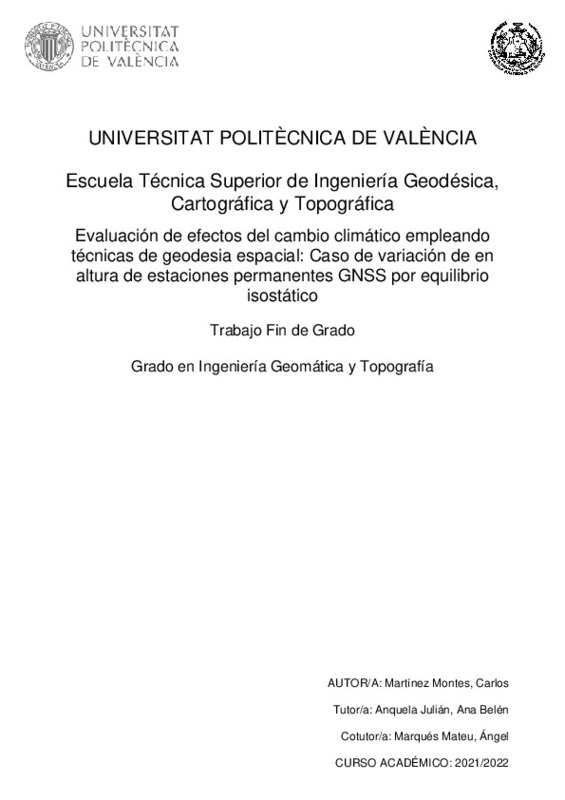|
Resumen:
|
[ES] Este proyecto trabaja la meta 13.1 del ODS13, acción por el clima. Generando una
herramienta que permitirá “fortalecer la resiliencia y la capacidad de adaptación a los
riesgos relacionados con el clima y los desastres ...[+]
[ES] Este proyecto trabaja la meta 13.1 del ODS13, acción por el clima. Generando una
herramienta que permitirá “fortalecer la resiliencia y la capacidad de adaptación a los
riesgos relacionados con el clima y los desastres naturales en todos los países”. Para
contribuir con este objetivo, se ha trabajado con la variación de coordenadas de
estaciones permanentes pertenecientes al IGS. Estas coordenadas pertenecen a un
ajuste armonizado de la serie temporal 1 de enero del año 1995 hasta el 1 de enero
del año 2020.
En la realización del estudio se emplea una herramienta de desarrollo propio; una
aplicación informática creada al efecto que permitirá el procesamiento sistemático de
un gran volumen de información obtenido de las estaciones permanentes. El desarrollo
informático permitirá además crear una librería para el lenguaje Python que facilitará
en un futuro a otros usuarios la obtención de información de cualquier estación
permanente mundial en el lapso de tiempo deseado.
Para la realización de este proyecto se ha seguido una metodología que consta de los
siguientes puntos:
• Descarga de datos
• Análisis y tratamiento de la información
• Obtención de resultados: mapas y gráficos
• Creación de una clase (estructura informática de la información) de forma
similar a la estructura de cualquier librería Python
[-]
[EN] From the Universities we have a privileged situation that allows us to bring technology closer to the SDGs. This proposal aims to bring students closer to SDG13, applying learning methodologies aimed at evaluating the ...[+]
[EN] From the Universities we have a privileged situation that allows us to bring technology closer to the SDGs. This proposal aims to bring students closer to SDG13, applying learning methodologies aimed at evaluating the consequences of climate change through satellite positioning techniques. The student, through his TFG, will implement a library of functions in Python language to retrieve the weekly solution for the positioning of several permanent GNSS stations from the service provided by NASA, and will evaluate the acceleration produced in recent years in the h component ( elevation or height) due to ice loss at stations near the poles.
In this work, skills are developed in the management of products resulting from the constellations of positioning satellites, available to the public, and applied to the evaluation of the consequences of climate change. These skills are a very attractive element in the business environment and can be transferred to a multitude of applications.
Our student will learn to analyze the effect caused by the melting of the poles on the tectonic plates. When the frozen mass disappears, its weight must be compensated by isostatic movements of the tectonic plates in the polar zones, causing the plates to rise in these zones. This experience allows us to know how the melting of the poles is affecting the different permanent GNSS stations near them in recent years through spatial geodesy and positioning techniques. Through this study it will be possible to see the trend of each of the coordinates of the permanent stations, especially the variations in height, as well as the speed of change of said coordinates, that is, it will be possible to verify if in recent years the process of ice loss over the study area as a consequence of climate change. Climate change globally affects the entire planet and has a negative impact on the economy and citizens in general. Goal 13 calls for urgent action to combat climate change and its consequences. This experience makes it possible to objectively assess, using geodetic variables, measurable consequences of climate change, and to quantify the acceleration process that is taking place.
[-]
|







